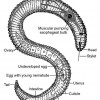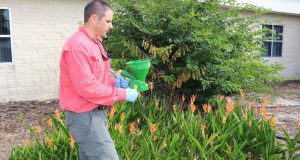While some people opt for professional lawn maintenance companies, some homeowners may wish to perform their own landscape pest control in order to save money, to have more control of what is applied, or simply because they enjoy it. This EDIS publication is for Florida gardeners, horticulturalists and homeowners who want to utilize herbicides to control weeds in their landscape. This new 9-page publication of the UF/IFAS Environmental Horticulture Department discusses common herbicides available at retail stores and how homeowners can use these them safely and effectively. Written by Chris Marble.
https://edis.ifas.ufl.edu/ep575
Tag: Home Lawn and Landscape
Nematode Management for Bedding Plants
 Florida is the “land of flowers.” Surely, one of the things that Florida is known for is the beauty of its vegetation. Due to the tropical and subtropical environment, color can abound in Florida landscapes year-round. Unfortunately, plants are not the only organisms that enjoy the mild climate. Due to warm temperatures, sandy soil, and humidity, Florida has more than its fair share of pests and pathogens that attack bedding plants. Plant-parasitic nematodes can be among the most damaging and hard-to-control of these organisms. This 11-page fact sheet was written by William T. Crow, and published by the UF Department of Entomology and Nematology, February 2014.
Florida is the “land of flowers.” Surely, one of the things that Florida is known for is the beauty of its vegetation. Due to the tropical and subtropical environment, color can abound in Florida landscapes year-round. Unfortunately, plants are not the only organisms that enjoy the mild climate. Due to warm temperatures, sandy soil, and humidity, Florida has more than its fair share of pests and pathogens that attack bedding plants. Plant-parasitic nematodes can be among the most damaging and hard-to-control of these organisms. This 11-page fact sheet was written by William T. Crow, and published by the UF Department of Entomology and Nematology, February 2014.
http://edis.ifas.ufl.edu/in470
ENH1120/EP379 Sharpening Tools for Landscaping and Gardening
ENH-1120, a 5-page illustrated fact sheet by Geoffrey C. Denny, discusses the required equipment and supplies to sharpen common landscape and garden tools, as well as the proper sharpening techniques. Published by the UF Department of Environmental Horticulture, May 2009.
http://edis.ifas.ufl.edu/EP379
